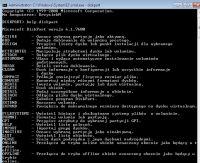Hello. More than a year ago I bought an external 2.5 "WD Elements 1TB (WD BUZG0010BBK-EESN) for recording programs from TV and as an additional disk to a computer (for photos, movies, some programs, etc.) The disk is formatted in NTFS and a computer with Windows 7, which is usually hooked up, handles it without any problems (I checked it on other computers with friends and there are 7 no problem.) The problem appeared when I wanted to rip data from the netbook (MSI U135DX with Windows XP Home SP3). is running and working all the time, but you can not see it in My Computer or in Disk Management, I also connected the borrowed Verbatim 1TB drive, but it was formatted in FAT32 and XP with it.
What is the reason for this? Any program or setting will solve the problem? I would like to add that the format is not an option, because I have too much data on the netbook and external drive to secure them somewhere safely.
Thanks in advance for your help!
What is the reason for this? Any program or setting will solve the problem? I would like to add that the format is not an option, because I have too much data on the netbook and external drive to secure them somewhere safely.
Thanks in advance for your help!




